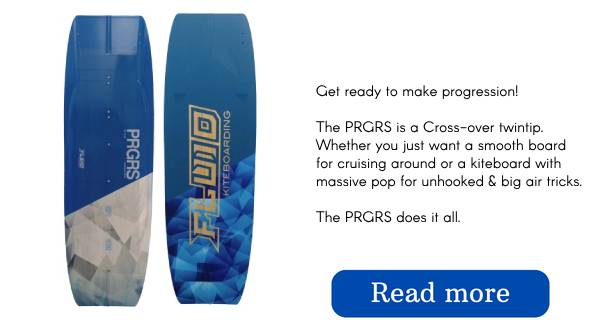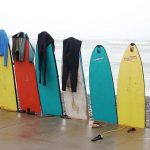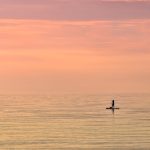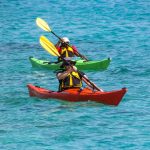Are you ready to embrace the thrilling world of surfing, but find yourself perplexed by the multitude of surfboard sizes available?
As a beginner, selecting the right surfboard size can significantly impact your progress and overall enjoyment in the water.
Fear not, as we delve into the depths of this exhilarating sport and demystify the quest for the ideal surfboard size for beginners.
In this comprehensive guide, we’ll navigate through the intricacies of surfboard dimensions, taking into account vital factors such as stability, maneuverability, and wave-catching potential.
Whether you dream of gliding effortlessly across gentle swells or charging through more challenging waves, I’ll empower you with the knowledge to make an informed decision and set you up for success right from the start.
I will uncover the secrets to finding the right board, so hopefully making this guide a valuable resource for surf enthusiasts.
So, grab your virtual board and dive into this immersive exploration of surfboard sizes. Let’s paddle out together and ride the wave of knowledge that will carry you towards an unforgettable surfing journey.
Which Surfboard To Choose?
Surfing offers a sense of freedom and an unbreakable connection with the sea that is unparalleled. Who doesn’t want to be a part of that? It is exhilarating!
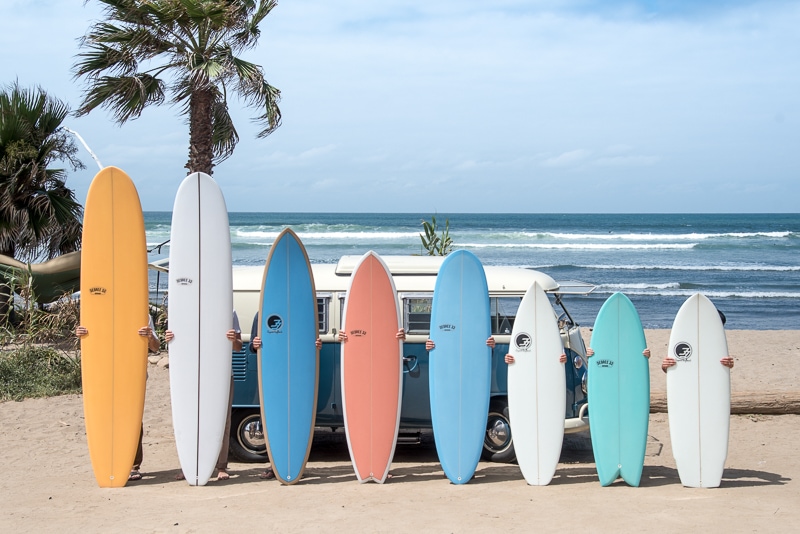
Most of us have the urge to get on a surfboard right away and rush to the wave, but it’s not as simple as that. One must practice and have the correct surfboard in order to become an expert at riding the waves.
Maintaining an upright position in the water and having the ability to paddle are the essential requirements for a novice.
Novices require more buoyancy and steadiness to gain knowledge of fundamentals like paddling, turning, popping up to their feet the correct way, and catching waves on a longboard prior to transferring to a more innovative surfboard.
An experienced surfer usually rides a shortboard with increased rocker and decreased volume, as they have already become proficient at paddling and getting onto their board.
As a novice, you should acquire a surfboard with more buoyancy and stability so you can quickly paddle out to the waves and remain afloat while getting your feet situated on the board.
Newcomers perform better with longboards because they offer the greatest stability and are the most buoyant.
Longboards are better for staying above the water due to their increased length and larger surface area for your feet.
Shortboards, on the other hand, don’t remain as afloat in the water. Riding a longboard makes it simpler to paddle and flow between waves, giving you access to more waves and more practice.
You might also want to consider mid boards and hybrids. These surfboards are suitable for someone who has a bit of experience but is still a novice.
When you are shopping for these boards, you should still consider the same factors.
Longboards are usually more than 8 feet and wider than 20 inches with a curved front for great balance.
The capacity of longboards typically ranges from 60-100 liters, allowing them to float well. These boards are an excellent pick and move easily, making it simple for a novice to learn.
Many surfers lean towards shortboards instead of the longboard, but these boards are not the best choice for novices as they do not provide enough buoyancy and are much less steady.
It is recommended to master the rudimentary elements of paddling, turning, getting up on the board in the right way, and successfully catching waves on a longboard before transitioning to a shortboard.
The only way to become proficient at surfing is to get out and practice on the waves.
When you have developed the ability to ride up on the surfboard and maintain balance in the surf, you will be able to experiment with your own personal approach to surfing.
A board that facilitates learning and allows you to glide through the water without difficulty is necessary.
How To Choose Your Surfboard as a novice
There are a multitude of surfboards and an extensive amount of jargon to consider before finding the ideal one for you.
It may appear to be a great deal of work, but you will eventually have the ideal surfboard and lots of fond recollections.
Soon enough, you will have become an expert at surfing and searching for your next surfboard.
Volume and Length
When considering the size and buoyancy of a surfboard, it is important to choose one that can support your weight and keep you steady in the water.
You must be able to reach the swells quickly and firmly put your feet in place when it is time. The more waves you encounter, the faster you can pick up the skills and the more you practice, the simpler it becomes.
Generally, when looking for a surfboard, it is recommended that you get one that is three feet taller than your own height.
The size of the board you will require is inversely proportional to your height. The board’s length is calculated from the nose tip to the tail tip.
Different kinds of surfboards include shortboards, funshape, mini mal, longboard, and soft top. It is evident that these boards vary in terms of their length and capacity.
The size of the surfboard is of great significance to all surfers, no matter the skill level, when selecting a board.
It does not matter what your appearance is like when you are sprinting to catch a wave, or when you are riding it. Length determines your stability and maneuverability.
Boards that are longer provide more stability, while those that are shorter are simpler to maneuver. As a newbie, you might assume that you would be more skillful in navigating, however that is not accurate.
If you have difficulty maneuvering quickly to the waves, it will be harder to get your feet up and you will not be able to float as well, resulting in spending more time in the water rather than actually learning how to ride the waves.
The size of a surfboard is expressed in liters and the higher the liters, the more buoyancy and steadiness you will have.
A capacity of 60 liters or more is ideal for buoyancy, and the greater the amount, the more you’ll be able to stay afloat.
If you select a board with a large capacity and three feet taller than your own height, you will be surfing the waves quickly.
Having larger feet is advantageous when it comes to quickly getting around. A larger surfboard necessitates less effort to paddle and effortlessly moves to the next wave.
Width and Design
A wider surfboard is beneficial to newbies since it offers more space and buoyancy.
The additional space between the track supports can provide more stability for your feet until you become more confident with the way you stand.
The breadth of the board is determined by the farthest distance between the rails.
The Rocker
The curvature of a surfboard from the tip of the nose to the end of the tail is crucial to selecting the right board.
The less curvature a board has, the flatter it will be, resulting in more of the board’s surface being in contact with the water.
The more curvature in the board, the more agile it will be and the more maneuverable it will be.
Material
The substance your fresh out of the box new surfboard will be manufactured using is of significance, regardless of whether you believe it or not.
Surfboards are typically constructed using either Epoxy or Polyurethane (known colloquially as poly or PU). Epoxy is the preferable selection for novices due to its higher buoyancy, resilience, good maneuverability, and less chances to obtain dents.
Surfers with more expertise generally prefer poly boards as they are heftier and have more flexibility.
WHAT IS THE BEST BEGINNER SURFBOARD IN 2023?
Below you will find my 5 best choices currently available…
1. JJF BY PYZEL, THE LOG
The best surfboard for beginners, overall
SPECIFICATIONS
Fins: Centre fin and side-bites
Construction: Eco EPS with soft EVA deck
Ability: Total novice
TODAY’S BEST DEALS
REASONS TO BUY
+ Tough but light construction
+ Soft deck and rails
+ A serious wave magnet
REASONS TO AVOID
– There are cheaper alternatives
Boards meant for novices in surfing used to be cumbersome and made of terrible foam that were only beneficial for a direct journey to the shoreline.
Currently, there is a large selection of designs from well-known shapers that are not only beneficial for catching your first waves, but also have been crafted to assist you in improving your surfing.
The Log is a state-of-the-art learner board, the brainchild of two of the most renowned surfers and shapers in the world—John John Florence, a two-time world champion, and John Pyzel, a highly respected shaper.
It’s a piece of cake to catch waves on the Log, yet it’s still agile enough for you to cruise down the face of the wave, make turns, and execute cutbacks.
2. TIKI EPIC 6’6″
The best surfboard for smaller sized beginners
SPECIFICATIONS
Fin system: FCS
Construction: PU core, fibreglass with 4mm EVA skin
Ability: beginner
REASONS TO BUY
+Loads of float
+Super stable
+Very well constructed
REASONS TO AVOID
– Too small for heavier surfer
Tiki’s Epic line of soft-top surfboards is among the highest quality available. This board is built with a classic foam core and a wooden stringer for greater rigidness.
It is then enveloped in two layers of 6oz fiberglass and is completed with a 4mm EVA deck skin that is soft yet strong and a hard bottom for greater velocity.
This 6′ 6″, 53 litre board is a great choice for kids or those who weigh less than 70kg, as it is more compact and easier to maneuver than a longboard or mini-mal.
Epic has boards for those who are very tall and those who are more experienced. They offer 7′, 7’6″, 8′, 8’6″ and 9′ boards for taller surfers and 6′ and 5’6″ fish designs that are best suited for experienced riders to have a great time.
The boards supplied feature FCS fins that can be altered to hard fins as you become more experienced.
3. OSPREY 6FT WOOD FOAMIE
Once you have gained proficiency in the fundamental elements, the next level to accomplish.
SPECIFICATIONS
Fins: rubber, included
Construction: EPS Expanded Polystyrene
Ability: beginner +
REASONS TO BUY
+ More performance
+ Great price
+ Looks cool
REASONS TO AVOID
– More difficult to master
The Osprey board’s smaller size and focus on performance make it simpler to do more advanced moves on the wave, such as cutting back and pumping to increase speed, compared to the Hold Fast.
It is not a Kelly Slater pro model, however it is mainly made for novices, featuring an outer layer of soft foam to give them assurance while in the water and a large amount of volume so it can catch waves with minimal effort when paddling.
A shorter size may be harder for a larger person to handle, but it is ideal for children, adolescents, or those of a small build.
In contrast, experienced surfers who want an inexpensive and convenient board to use during the summertime when the waves are weak will find this to be a great and enjoyable option.
4. SURFTECH ROBERT AUGUST WHAT I RIDE SOFT TOP 9FT SURFBOARD
A beginner surfboard with plenty of grip
SPECIFICATIONS
Fins: Single fin with FCS II side bites
The structure is composed of an EPS foam core, a base made of epoxy resin, and a top deck that is made of EVA material.
Ability: Beginner to advanced
REASONS TO BUY
+ An iconic shape with a soft deck
+ Genuinely ideal for all abilities
+ Ding and damage resistant
REASONS TO AVOID
– It’s not cheap
Coming up in our review of the best surfboards for the inexperienced is Robert August’s highly acclaimed What I Ride board, but with a soft deck.
This Softop version differs from the typical model in that its deck is long-lasting and slightly spongy, providing more cushioning for the knees and giving excellent traction so waxing isn’t necessary.
The EVA covering is gentle and stretches along the rails in order to reduce the risk of injury to anyone nearby and guard the surfboard itself.
Surftech’s Tuflite epoxy construction is used to complete the base, and it is well-known for its resistance to dings.
This 9ft board has a width of 22.5in and a thickness of 3.2in, making it slightly broader and thicker than its epoxy counterpart, however, it maintains the same level of performance.
The board is great for those new to the sport as it can detect even the slightest movement, but it is also able to handle larger waves with ease.
For experienced surfers, a dip beneath the nose of the board can enable them to stroll the board and have their toes hang over the front.
5. TORQ MODFISH – SOFT DECK
The best surfboard for intermediate ability
SPECIFICATIONS
Fins: Futures quad or thruster
Construction: EPS core, epoxy finish
Ability: Intermediate and above
REASONS TO BUY
+ Easy wave entry
+ Seriously fast
+ Easy to manoeuvre
+ Fins included
REASONS TO AVOID
– Not for beginners
If you are a surfer who usually rides longboard or mini mal, and you want something more agile that won’t reduce your wave count too much, the Torq Modfish is a great selection.
Although it is incredibly fast on the water and far more responsive than a mini mal, the Modfish is great for paddling and is quite steady once you are standing up due to the large amount of foam under your chest.
There are various dimensions from 5’11 to 7’2 available, which are suitable for surfers between 35-65kg and 60-100kg, so everyone can find an option that is perfect for them.
Skilled surfers typically use fish type boards that are shorter than their height by two to six inches, but for beginners, it is best to choose a board that is a few inches taller than them.
The Modfish is obtainable as a soft top, and in multiple hard designs – from the basic epoxy version to a very lightweight option with a carbon stringer.
In Conclusion
the quest for the best surfboard size for beginners boils down to finding the perfect balance between stability, maneuverability, and wave-catching potential.
It’s crucial to consider your skill level, body type, and the type of waves you’ll be riding.
Remember, a surfboard that is too small may hinder your progress, while one that is too large can be challenging to control.
By understanding the fundamentals of surfboard dimensions and how they affect your surfing experience, you can make an informed decision that sets you up for success.
Experimenting with different sizes and seeking guidance from experienced surfers or professionals can also be incredibly valuable in finding the perfect board that complements your abilities and aspirations.
As you embark on your surfing journey, be patient with yourself and embrace the learning process. Surfing is not just about mastering the waves.
It’s about immersing yourself in an incredible sport that brings you closer to nature, challenges your limits, and fills you with pure joy.
So, whether you opt for a longboard to catch small, rolling waves or a shorter board to tackle more challenging swells, remember that your surfboard should be an extension of your passion and dedication.
It should inspire confidence and enable you to ride the waves with enthusiasm.
Now, armed with the knowledge and insights shared in this guide, dive into the surfing world with excitement and curiosity.
Embrace the waves, connect with fellow surfers, and savor every exhilarating moment.
May your surfboard become a faithful companion, propelling you towards endless adventures and a lifelong love affair with the ocean.
Happy surfing!
